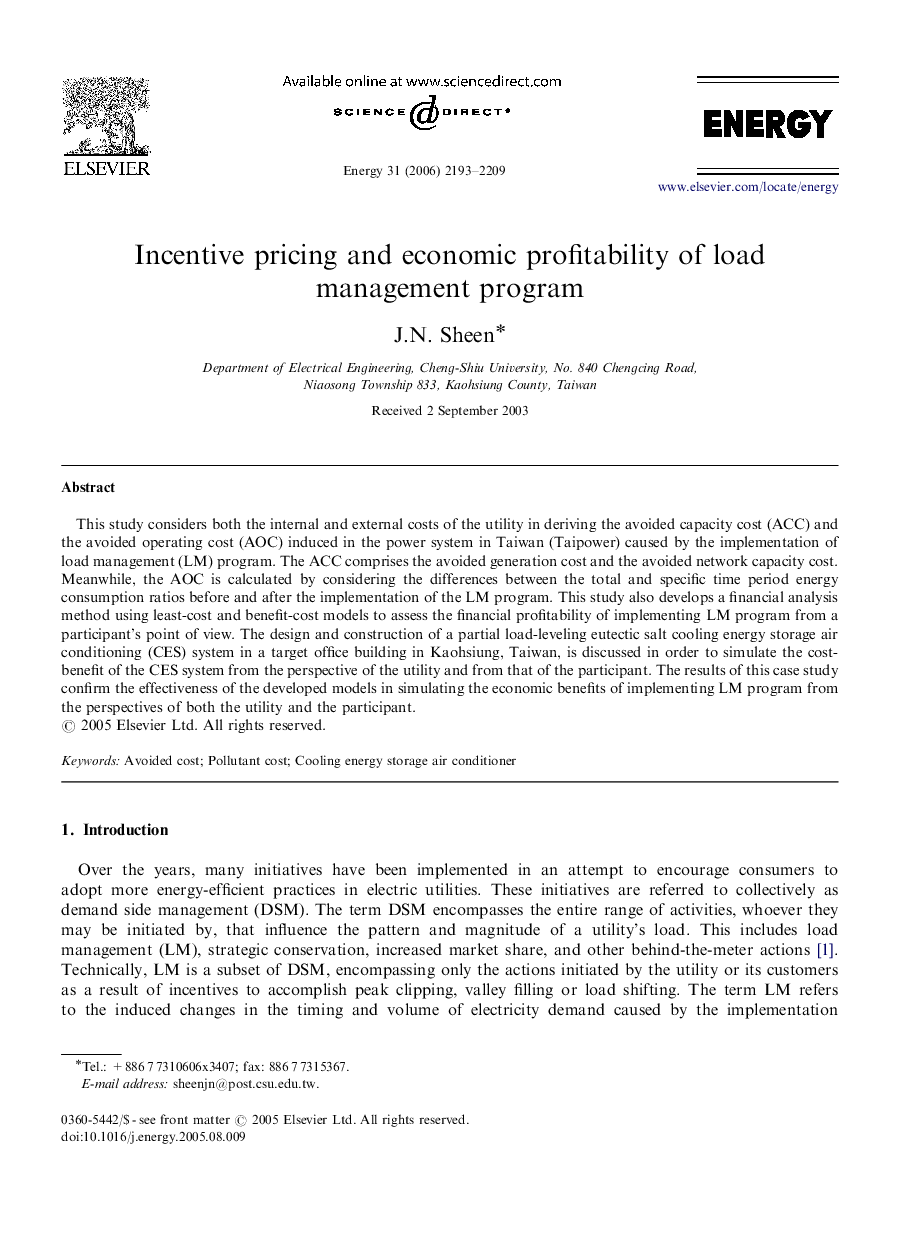| Article ID | Journal | Published Year | Pages | File Type |
|---|---|---|---|---|
| 1736185 | Energy | 2006 | 17 Pages |
This study considers both the internal and external costs of the utility in deriving the avoided capacity cost (ACC) and the avoided operating cost (AOC) induced in the power system in Taiwan (Taipower) caused by the implementation of load management (LM) program. The ACC comprises the avoided generation cost and the avoided network capacity cost. Meanwhile, the AOC is calculated by considering the differences between the total and specific time period energy consumption ratios before and after the implementation of the LM program. This study also develops a financial analysis method using least-cost and benefit-cost models to assess the financial profitability of implementing LM program from a participant's point of view. The design and construction of a partial load-leveling eutectic salt cooling energy storage air conditioning (CES) system in a target office building in Kaohsiung, Taiwan, is discussed in order to simulate the cost-benefit of the CES system from the perspective of the utility and from that of the participant. The results of this case study confirm the effectiveness of the developed models in simulating the economic benefits of implementing LM program from the perspectives of both the utility and the participant.
